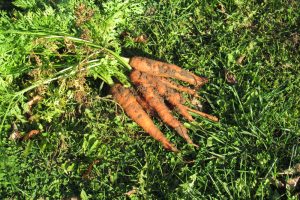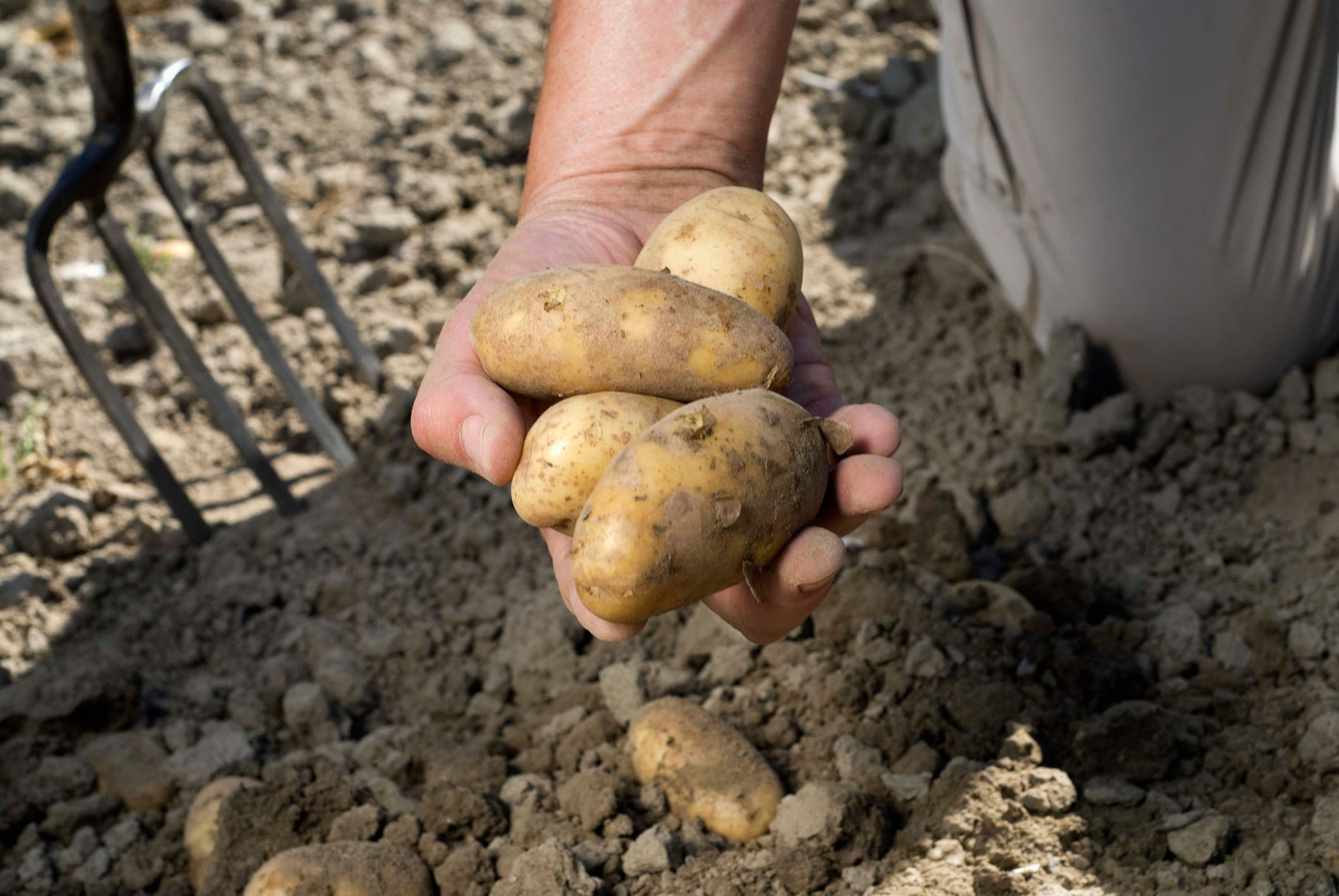Root for Root Crops

I’ve been harvesting carrots for soup. Carrots are one of the last crops that mature in my vegetable garden. Cold temperatures help to make them sweeter and sometimes I have harvested them in the winter, after bitter temperatures, snow, and then a thaw.
According to the University of Connecticut, true root vegetables include taproots and tuberous roots. Taproot vegetables grow downward into the soil and tend to be drought tolerant as the tap root can grow 20 to 30 feet long to find water in dry climates. Taproots are most often tapered in shape and include beets, parsnips, carrots, turnips, radishes, rutabaga, salsify, celeriac and daikon radish. Tuberous roots are a modified lateral root, which can look like taproots. Examples of tuberous roots are sweet potatoes and cassava.
Not technically a taproot, but growing underground, are corms, rhizomes and tubers, which are different from tuberous roots. These structures are really stems, not true roots. Corms include Chinese water chestnuts and taro. Rhizomes include ginger, ginseng and turmeric. Some rhizomes grow on top of the ground and can look like a mass of horizontal roots, but are stems, not roots. In the tuber class, we find potatoes and some varieties of yams. Tubers are thickened underground stems.
If you did not grow root or other assorted underground crops in your own garden, they are readily available at grocery stores and farmers markets. These vegetables store well and are a common item at winter farmers markets.
Nutritionally, true root vegetables, corms, rhizomes and tubers have much in common as they are all storage organs for plants. They are a major source of carbohydrates, which provide the plant with energy for growth and metabolism. The University of Connecticut says carbohydrates in root and other underground crops tend to digest more slowly and help supply the energy needs of the human body. They are a source of fiber and phytonutrients – chemical compounds that have antioxidant and anti-inflammatory properties in humans.
Growing root vegetables is not difficult, but the soil is important. Not surprisingly, root crops like deep, loose soil that holds moisture, but is well-drained. Michigan State University Extension recommends mixing in well-aged compost into the soil with a goal of having five percent or more organic matter in your soil.
After seeds germinate, thin your plantings to the recommended spacing on the seed packet. This can be a delicate process and a table fork can make a handy tool. You want to give your root crops plenty of room to grow. Thinned out beet seedlings can be cooked and enjoyed as greens.
It is also recommended that you mulch your root crops with straw, shredded newspaper or leaf mulch. This will keep the soil cooler and help retain moisture in the soil. The mulches mentioned above will also break down in one season. Retaining soil moisture is especially important, as more than half the mass of your vegetables is water. Root crops need about one inch of water a week during the growing season, more if the weather is hot and dry.
Root vegetables are fun to grow and harvest and are very nutritious. They also keep well, allowing you to easily enjoy your harvest through the fall and into the winter months.





